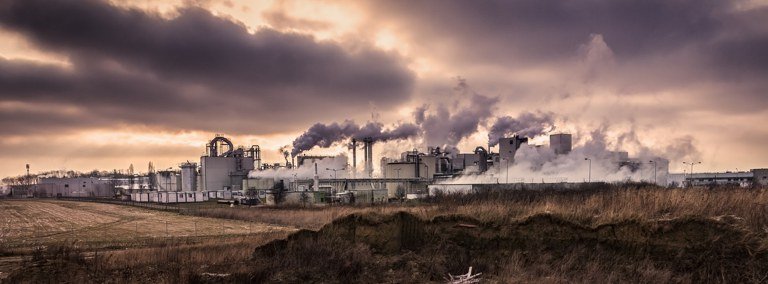
What is Climate Pollution?
The ways we move, power buildings, create and dispose of materials, and manage the land around us can produce harmful climate pollutants. These pollutants can impact human health, damage the environment around us, and alter weather patterns. Activities like burning fossil fuels produce climate pollution which exposes our communities to toxins and an increased risk of experiencing environmental disturbances like wildfires or drought. If not addressed, the hazards that these pollutants can cause will have a negative effect on the individual, economic, and ecological prosperity of New Mexico.
Thankfully, a variety of measures can be implemented to reduce the production of climate pollution and build communities that are resilient to their effects. Transitioning to more efficient fuels, technology, and processes can limit the amount of pollutants generated. Additionally, policies and programs can be implemented that prepare us to deal with environmental disturbances that can be caused by these pollutants.
The Greenhouse Gas Inventory
To identify how to most effectively reduce the impacts of these pollutants, the City of Albuquerque commissioned an inventory of climate pollutants for Central New Mexico. This inventory quantified the amount of climate pollution emitted in the City and in Sandoval, Torrance, Bernalillo, and Valencia Counties during 2023. Conducting an inventory helps decision-makers identify the primary sources of climate pollution and develop strategies to increase our community’s resiliency to the health, economic, and environmental impacts of these pollutants.
The inventory estimated that in Central New Mexico, these sectors emitted nearly 10.1 million metric tons of GHGs in 2023. This is equivalent to the climate pollution produced from driving a standard passenger car to the moon and back 53,700 times! The primary contributors to climate pollution in the MSA are the transportation and building energy sectors. This information can be seen in Figure 1 below.
The inventory developed for the MSA followed standard protocols for climate pollution inventories and quantified pollutants from Transportation, Building Energy, Industrial Processes and Product Use, Waste and Wastewater, and Agriculture.
Criteria Pollutants
Criteria Air Pollutants from these sectors can cause or worsen respiratory illness, especially in children, pregnant women, older adults, and people with existing heart or lung conditions (EPA 2024). Increased occurrence or severity of asthma and emphysema have been associated with exposure to air pollution. Health impacts of exposure to these pollutants depend on a variety of factors such as concentrations, length of exposure, and proximity to sources. In 2023, 99,342 metric tons of Criteria Air Pollutants were emitted from climate-polluting sources.
Greenhouse Gases
The inventory estimated that in Central New Mexico, these sectors emitted 10.1 million metric tons of GHGs in 2023. This is equivalent to the climate pollution produced from driving a standard passenger car to the moon and back 53,700 times! The primary contributors to climate pollution in the MSA are the transportation and building energy sectors. This information can be seen in Figure 1 (Left).
Pollutants produced from each county within the MSA were also estimated in the inventory. Each county has unique characteristics that must be considered when developing strategies for reducing pollutants. Areas with more dense population, industry, and commercial activity have higher emissions. This is reflected as activities within Bernalillo County make up 72% of all climate pollution from the MSA. See Figure 2.
The county and sector-specific findings from the inventory highlight opportunities to reduce climate-polluting activities from the transportation and building energy sectors. See the sector-specific blog posts for more information on climate pollution within each sector.
For more information, read the sector summaries or watch our Climate Pollution Inventory Overview recording below!




